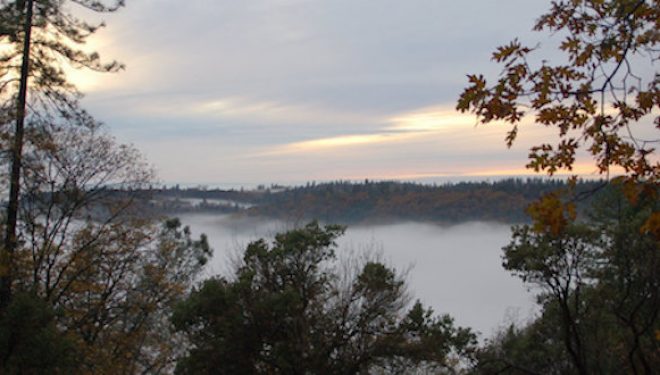
By Chris Carrillo and Derek R. Hoffman
The California Department of Water Resources (DWR) recently issued a report indicating the State has seen a modest rebound in precipitation and groundwater levels since 2016 when historic drought conditions prevailed. Three of the past four water years have been above average, with 2017 and 2019 being among the wettest years on record in California.
Background
California experienced one of its most severe droughts on record in the past decade. The resulting impact on the health of the State’s underground aquifers was significant. On average, California derives approximately 30 percent of its water supply from groundwater in normal years and up to 60 percent in drought years. Restoring and maintaining healthy groundwater basins has become a top statewide and local priority.
Each year, DWR monitors the state’s groundwater levels, primarily based upon data obtained in the spring prior to crop irrigation season. Reporting includes water level data from wells for at least five years reporting to DWR by the California Statewide Groundwater Level Monitoring Entities, local agencies, and well owners. DWR recently completed its annual assessment and issued its report showing 2019 as one of the wettest years on record.
The Statewide Annual Precipitation chart (NOAA National Centers for Environmental Information, Climate at Glance: U.S. Time Series, Precipitation) monitors precipitation dating back to 1970. It indicates that since 2009, there have been five below-average water years, three average water years, and three above-average water years. Following the 2012 to 2016 drought period, 2017 and 2019 were reported as above average water years.
The groundwater level change maps referenced in the DWR report provide one-year changes from Spring 2018 to Spring 2019 and three-year changes from Spring 2016 to Spring 2019.
One-Year Change Map Spring 2018 to Spring 2019
According to DWR, the one-year change map shows that approximately 50 percent of recorded well measurements statewide indicate net water level changes of less than five feet and that 25 percent of the remaining statewide well measurements show an increase in water levels.
For the San Francisco Bay Hydrologic Region (281 wells), 23 percent of wells showed an increase of five to 25 feet in groundwater levels from Spring 2018 to Spring 2019, while approximately six percent (6 percent) of wells saw a decrease of that same amount. In the San Joaquin River Hydrologic Region (734 wells), approximately 17 percent of wells showed an increase of five to 25 feet during the past year and approximately 8 percent of wells saw a decrease of that amount. The South Coast Hydrologic Region (southern California coastal and inland populated areas, with 995 wells) reported approximately 26 percent of its wells increasing by five to 25 feet, while less than 10 percent showed decreases in that range. Geographically, groundwater level declines in amount greater than 25 feet occurred primarily in the Tulare Lake Hydrologic Region, and more specifically in the San Joaquin Valley.
Three-Year Change Map Spring 2016 to 2019
Turning to the three-year change map, approximately 65 percent of well measurements reported net water level changes of less than five feet. The Sacramento Hydrologic Region noted considerable groundwater level increases, indicating 49 percent of the reporting wells increased more than five feet, and even higher increases specifically in Yolo and Sutter counties. In particular, the San Francisco Bay Hydrologic Region reported approximately 24 percent of its wells experienced five to 25-foot groundwater level increases and less than 5 percent seeing a comparable decrease over the three-year period from Spring 2016 to Spring 2019. The San Joaquin River Hydrologic Region reported nearly 40 percent of its wells experiencing five to 25-foot increases in water levels and approximately 11 percent experiencing decreases in that range. Finally, the South Coast Hydrologic Region reported nearly 31 percent of its wells experiencing five to 25-foot increases in water levels and approximately, and less than 12 percent experiencing decreases in that range during the same three-year timeframe.
Five-Year and Ten-Year Change Maps Show Only Partial Recovery to Pre-Drought Conditions
Despite the generally positive recent data, the five- and ten-year maps paint a different picture. These figures illustrate that many groundwater basins have not recovered to pre-drought conditions. In the San Joaquin, Tulare Lake, and South Coast Hydrologic Regions, 30 – 70 percent of well measurements report water level decreases over the last five- and ten-year periods. The five-year change map does show groundwater level increases in the Sacramento Hydrologic Region in Tehama, Yolo, and Sutter Counties and throughout the San Francisco Bay Hydrologic Region.
Conclusion and Implications
Although California’s Spring 2019 groundwater levels have widely improved over the past one to three years with 2017 and 2019 as some of the wettest years on record, groundwater levels have not fully recovered to pre-drought conditions, as shown by the five- and ten-year data. The results demonstrate not only California’s wild and unpredictable swings in precipitation levels since the onset of the recent drought, but also the severity of the drought’s impact and the efforts and conditions that will be needed to return to pre-drought levels.




